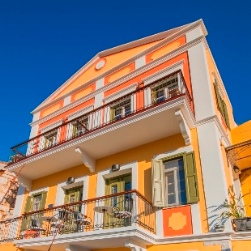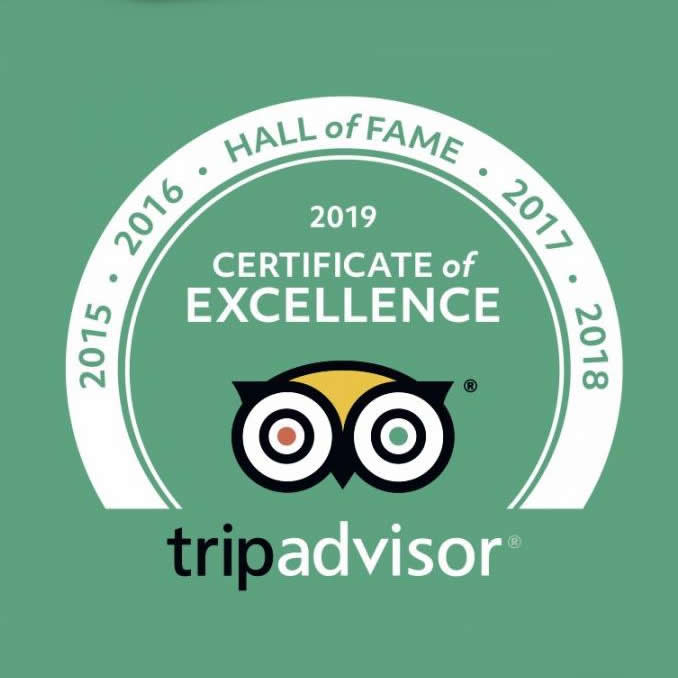The small island of Symi is located only an hour by ferry from Rhodes Dodecanese. Built amphitheatrically along the slopes of a hill, Symi Town is divided in two settlements, Gialos which is the port of the island and Chorio which is the main village where all facilities and services can be found.
Symi is very near the coast of Asia Minor. The island boasts about well preserved neoclassical and two-storey stone houses of traditional architecture. In the early 20th century it was the capital of Symi in the Dodecanese, when it experienced a great economic boom.
Symi had been inhabited since prehistoric times, and Homer says that it has taken part in the Trojan war with King Nereus. In 1309 Simi was conquered by the Knights of the Order of St John and in 1522 it passed into the hands of the Turks, in order to be incorporated with the other Dodecanese islands in Greece.
Symi island can be easily accessed from Rhodes. The most popular spots on Symi island are the Monastery of Archangel Michael in the port of Panormitis, on the southern side, and Symi Town, a picturesque village with Neoclassical houses and paved streets.
What to see
 City of Symi. Simi Town consists of two settlements preservable, Ano Symi which is the Castle of the Knights, and Gialos which is the island's port.
City of Symi. Simi Town consists of two settlements preservable, Ano Symi which is the Castle of the Knights, and Gialos which is the island's port.
![]() Gialos. On the port, you will admire the buildings of the Police and the old Post Office, the historic house (today’s LOS Art Gallery) where the incorporation treaty of Symi and other Dodecanese islands Greece was signed, the Cathedral of St. John the Baptist of 1838, the Customs House, the Fish Market, the stone bridge, the statue of the little fisherman, the clock of 1881 and the old shipyard (Tarsanas) in Harani district. It is worth to visit Pontikokastro, which is one of the oldest monuments of the island.
Gialos. On the port, you will admire the buildings of the Police and the old Post Office, the historic house (today’s LOS Art Gallery) where the incorporation treaty of Symi and other Dodecanese islands Greece was signed, the Cathedral of St. John the Baptist of 1838, the Customs House, the Fish Market, the stone bridge, the statue of the little fisherman, the clock of 1881 and the old shipyard (Tarsanas) in Harani district. It is worth to visit Pontikokastro, which is one of the oldest monuments of the island.
![]() Chorio (Ano Symi). Five hundred stone wide stairs lead you from Gialos to Ano Symi Village. This is Kali Strata: houses and shops in the richest and most beautiful area. Once you reach the village, the locals will show you everything: Spetsaria, the old municipal pharmacy, Chatziagapitou-Xatziioannou house with its impressive hall, the house of Farmakides that houses the Archaeological-Folklore Museum, which apart from the remarkable collection of folk-hosts heads of statues, monuments and post-Christian period, and Byzantine icons.
Chorio (Ano Symi). Five hundred stone wide stairs lead you from Gialos to Ano Symi Village. This is Kali Strata: houses and shops in the richest and most beautiful area. Once you reach the village, the locals will show you everything: Spetsaria, the old municipal pharmacy, Chatziagapitou-Xatziioannou house with its impressive hall, the house of Farmakides that houses the Archaeological-Folklore Museum, which apart from the remarkable collection of folk-hosts heads of statues, monuments and post-Christian period, and Byzantine icons.
![]() Venetian Castle of the Knights. Located at the highest point of the village, with its surrounding walls of the church.
Venetian Castle of the Knights. Located at the highest point of the village, with its surrounding walls of the church.
![]() Monastery of Archangel Michael Panormitis. It constitutes the most important religious monument. The monastery has a hostel, which can accommodate up to 500 people. It is also worth visiting the folklore museum and church. In the sacristy of the monastery it was kept putting wishes in bottles and the sailors were saying that they were "washed up" by the sea. According to locals, if a vow is not taken, the Saint goes and gets it, and for this reason he was called the "Thief."
Monastery of Archangel Michael Panormitis. It constitutes the most important religious monument. The monastery has a hostel, which can accommodate up to 500 people. It is also worth visiting the folklore museum and church. In the sacristy of the monastery it was kept putting wishes in bottles and the sailors were saying that they were "washed up" by the sea. According to locals, if a vow is not taken, the Saint goes and gets it, and for this reason he was called the "Thief."
![]() Monastery of Archangel Michael Roukouniotis. The second largest Monastery, after Panormitis. It has fortification architecture, once was a Patriarchal Stavropigio and it stands out for the wall paintings of the 15th century.
Monastery of Archangel Michael Roukouniotis. The second largest Monastery, after Panormitis. It has fortification architecture, once was a Patriarchal Stavropigio and it stands out for the wall paintings of the 15th century.
![]() Twelve Caves-Emporios. The "Twelve Caves", one of the most unusual and enigmatic attractions of Symi, are located in Nimborio. There are twelve cave domes that probably served in the Byzantine era as painting and sculpture workshops. Still others say they were catacombs or burial monuments.
Twelve Caves-Emporios. The "Twelve Caves", one of the most unusual and enigmatic attractions of Symi, are located in Nimborio. There are twelve cave domes that probably served in the Byzantine era as painting and sculpture workshops. Still others say they were catacombs or burial monuments.
To anyone who wants to know the island on foot, the perfect start is the route Symi - Panormitis. The wayfarer should start early in order to avoid the midday heat. The route is quite green, and it is dotted with churches: Agios Konstantinos, Strateri Virgin, Saint John, Saint Marina and the monastery of Great Sotiras. A detour from here leads through a forest of cypresses, to Kourkouniotis, where there are 11 newly reconstructed stone wine presses.
Activities in Symi
• Water sports at the beach NOS.
• Excursion by boat or water taxi to the beaches of Ai-Giorgis Dysalonas, Saint Basil, Fokospilia, Nanou, Agia Marina, Agios Emilianos and in islands Nimos (to the north) and Sesklia (to the south).
• Diving.
• Spear fishing.
• Hiking (at 120 Byzantine wine presses that are scattered on the island).
• Sailing.
• Bus tour to Panormitis or Roukouniotis Monasteries, combined with swimming in one of the beautiful beaches Marathounda or Toli.
What to try
Do not miss during your visit to the island to try:
• Gaellopites (pies of smelt)
• Symian small shrimps
• Akoumia (donuts)
• Stuffed gialantzi
• Octopus
• Squid
• Cuttlefish
What to shop
Some of the best choices are the natural sponges, the Symian honey and the local herbs (oregano, rosemary, marjoram etc), which you can find at the famous store "Stavros Herbs”.








